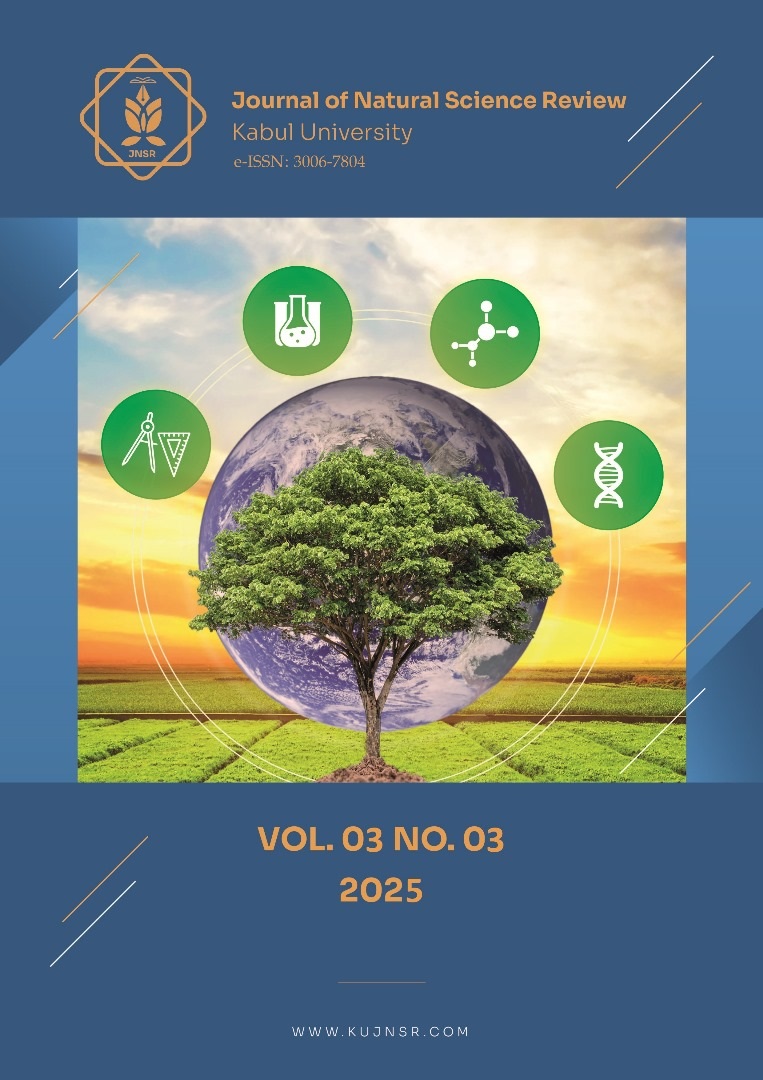Investigating the Performance of 5G Signals in Modeling Processing Algorithms in a Semi-Active Radar System
DOI:
https://doi.org/10.62810/jnsr.v3i3.222Keywords:
Signals, 5G, illumination signal, mutual uncertainty function, Direct signal, noise signal,, semi-active radarAbstract
The present research investigates the feasibility of utilizing standard 5G communication signals in semi-active radar systems (SARS). With the development of communication technologies, 5G signals have been considered as an illumination source for semi-active radars. With the limited expansion of 5G networks, conducting experimental studies in this field is challenging. Therefore, signal processing modeling is considered an essential solution to advance research in this field. The use of 5G signals can open new horizons in the development of high-resolution semi-active radar systems. The aim of this paper, focusing on the analysis of 5G-downlink signal characteristics and signal processing modeling in PALS, is to evaluate the capabilities and identify the system in providing high resolution in two dimensions (range and speed). To achieve the research objectives, the semi-active radar (PARL), standard, and structure (PARL) models, as well as the 5G signal propagation channel model, were based on the principles of signal processing theory. Computer modeling was used to calculate the PARL mutual uncertainty function using 5G signals. The results of the simulations showed that the semi-active radar system using 5G signals is capable of detecting targets with high resolution in both dimensions (range and speed). This system showed good performance in different scenarios. Therefore, 5G signals as an illumination source can be a suitable option for the development of PALS systems. It is suggested that, with the expansion of 5G networks, experimental studies should be conducted to validate the results of this al administration is necessary to optimize withdrawal guidelines.
Downloads
References
Aleksey, B., & Evgenii, V. (2016). Passivnaya kogerentnaya radiolokaciya [Passive coherent radar]. Journal of Communications Technology and Electronics, 27(1), 67–78. https://doi.org/10.32603/1993-8985-2024-27-1-67-78
Blázquez, R., Ummenhofer, M., & Cristallini, D. (2022). Passive radar architecture based on broadband LEO communication satellite constellations. 2022 IEEE Radar Conference (RadarConf22), 1–6. https://doi.org/10.1109/RadarConf2248738.2022.9764342 DOI: https://doi.org/10.1109/RadarConf2248738.2022.9764342
Blázquez-García, R., & Markiton, P. (2024). Passive radar imaging based on multistatic combination of Starlink and OneWeb illumination. 2024 IEEE Radar Conference (RadarConf24), 1–6. https://doi.org/10.1109/RadarConf2458775.2024.10548646 DOI: https://doi.org/10.1109/RadarConf2458775.2024.10548646
Brooker, G. (2011). Introduction to sensors for ranging and imaging. SciTech Publishing. https://doi.org/10.1049/SBRA014E DOI: https://doi.org/10.1049/SBRA014E
Cafforio, C., Prati, C., & Rocca, F. (1991). SAR data focusing using seismic migration techniques, 27(2), p. 194 – 207. https://doi.org/10.1109/7.78293. DOI: https://doi.org/10.1109/7.78293
Carrara-Walter, G., & Majewski-Ronald, M. (1995). Spotlight synthetic aperture radar : signal processing algorithms. Link
Charvat, G. (2007). A low-power radar imaging system (2nd ed.) [Master's thesis, Michigan State University]. ResearchGate. Link
Charvat, L., & Kempel, C. (2006). Synthetic aperture radar imaging using a unique approach to frequency modulated continuous-wave radar design, vol. 48, no. 1, https://doi.org/10.1109/map.2006.1645606. DOI: https://doi.org/10.1109/MAP.2006.1645606
Cheng, P., & Wan, J. (2015). Refocusing of ground moving targets for range migration algorithm in FMCW SAR 2015, vol. 9642. https://doi.org/10.1117/12.2194246. DOI: https://doi.org/10.1117/12.2194246
Du, L., Wang, Y., & Wu, Y. (2010). A Three Dimensional Range Migration Algorithm for Downward-Looking 3D-SAR with Single-Transmitting and Multiple-Receiving Linear Array Antennas. EURASIP J. Adv. https://doi.org/10.1155/2010/957916. DOI: https://doi.org/10.1155/2010/957916
Farhang, B. (2013). Adaptive filters theory and applications. Chichester, West Sussex, United Kingdom, John Wiley. Link
Feifeng, L., Cheng, H., & Teng L. (2010) A novel Range Migration Algorithm of GEO SAR echo data, in (IGARSS). https://doi.org/ 10.1109/IGARSS.2010.5651127.
Gomez, H., & Samczynski, P. (2022). The STARLINK-based passive radar: Preliminary study and first illuminator signal measurements. 23rd International Radar Symposium (IRS), Gdansk, Poland. https://doi.org/10.23919/IRS54158.2022.9905046 DOI: https://doi.org/10.23919/IRS54158.2022.9905046
Gómez, M., & Mata-Moya, D. (2020). DVB-T receiver independent of channel allocation, with frequency offset compensation for improving resolution in low cost passive radar. IEEE Sensors Journal, 20(24). https://doi.org/10.1109/JSEN.2020.3011129 DOI: https://doi.org/10.1109/JSEN.2020.3011129
Griffiths, H. D., & Baker, C. J. (2017). An introduction to passive radar. [Book]. Link
Martelli, T., Cabrera, O., & Colon, F. (2020). Lombardo P. Exploitation of Long Coherent Integration Times to Improve Drone Detection in DVB-S based Passive Radar. IEEE Radar Conf. (RadarConf20), Florence. https://doi.org/10.1109/RadarConf2043947.2020.9266624. DOI: https://doi.org/10.1109/RadarConf2043947.2020.9266624
Martinez, A., & Marchand, J. L. (1993). SAR image quality assessment, Rev. Teledetec., vol. 2, Link
Nascimento, H., & Silva M. T. (2014). Adaptive Filters. Academic Press Library in Signal Processing, vol. 1. https://doi.org/10.1016/B978-0- 12-396502-8.00012-7.
Okoń, M., & Kawalec, A. (2016). An analysis of Chosen Image Formation Algorithms for Synthetic Aperture Radar with FMCW. Link
Qisong, W., Liang, Y., & Mengdao, X. (2011). Focusing of tandem bistatic-configuration data with range migration algorithm. vol. 8. P, 88-92. https://doi.org/10.1155/2016/3251082. DOI: https://doi.org/10.1109/LGRS.2010.2051532
Rai, P. K., Kumar, A., & Khan, M. Z. (2021). LTE-Based Passive Radars and Applications: A Review. Vol, 42. https://doi.org/10.1080/01431161.2021.1959669 DOI: https://doi.org/10.1080/01431161.2021.1959669
Ramraj, D., Praveen, L., & Giovanni, P. (2022). Investigation on 5G Technology: A Systematic Review. https://doi.org/10.3390/s22010026. DOI: https://doi.org/10.3390/s22010026
Reigber, A. (2013). Very-high-resolution airborne synthetic aperture radar imaging: Signal processing and applications. Proceedings of the IEEE, 101(3). https://doi.org/10.1109/jproc.2012.2220511 DOI: https://doi.org/10.1109/JPROC.2012.2220511
Veremyev, V., & Kutuzov, M. (2024). Feasibility study of using 5G signals for illumination purposes in passive radar. Radiophysics and Quantum Electronics, 27(1), 67–78. https://doi.org/10.32603/1993-8985-2024-27-1-67-78 DOI: https://doi.org/10.32603/1993-8985-2024-27-1-67-78
Wang, R., Loffeld, O., & Knedlik, M. (2010). Focus FMCW SAR data using the wavenumber domain algorithm. IEEE Transactions on Geoscience and Remote Sensing, 48(4). https://doi.org/10.1109/TGRS.2009.2034368 DOI: https://doi.org/10.1109/TGRS.2009.2034368
Xin, L., & Hong, S. (2007). Parameter assessment for SAR image quality evaluation system. Proceedings of the Asian and Pacific Conference on Synthetic Aperture Radar (APSAR). https://doi.org/10.1109/APSAR.2007.4418554 DOI: https://doi.org/10.1109/APSAR.2007.4418554
Young, O. (2015). Focusing bistatic FMCW SAR signal by range migration algorithm based on Fresnel approximation. Sensors, 15(12), 29910–29925. https://doi.org/10.3390/s151229910 DOI: https://doi.org/10.3390/s151229910
Zhenyu, H., Yang, Y., & Duojie, W. (2022). Range resolution improvement of GNSS-based passive radar via incremental Wiener filter. IEEE Geoscience and Remote Sensing Letters, 19. https://doi.org/10.1109/LGRS.2021.3130062 DOI: https://doi.org/10.1109/LGRS.2021.3130062
rd Generation Partnership Project (3GPP). (2020, November). Study on channel model for frequencies from 0.5 to 100 GHz (3GPP TR 38.901 version 16.1.0 Release 16). European Telecommunications Standards Institute (ETSI). Link
rd Generation Partnership Project (3GPP). (2021, August). 5G; Physical channels and modulation (3GPP TS 38.211 version 16.6.0 Release 16). European Telecommunications Standards Institute (ETSI). Link
rd Generation Partnership Project (3GPP). (2021, January). 5G; NR; Base station (BS) radio transmission and reception (3GPP TS 38.104 version 16.6.0 Release 16). European Telecommunications Standards Institute (ETSI). Link
Downloads
Published
How to Cite
Issue
Section
License
Copyright (c) 2025 Sayed Sarwar Ibtikar, Rajab Ali khavari

This work is licensed under a Creative Commons Attribution-NonCommercial 4.0 International License.



























